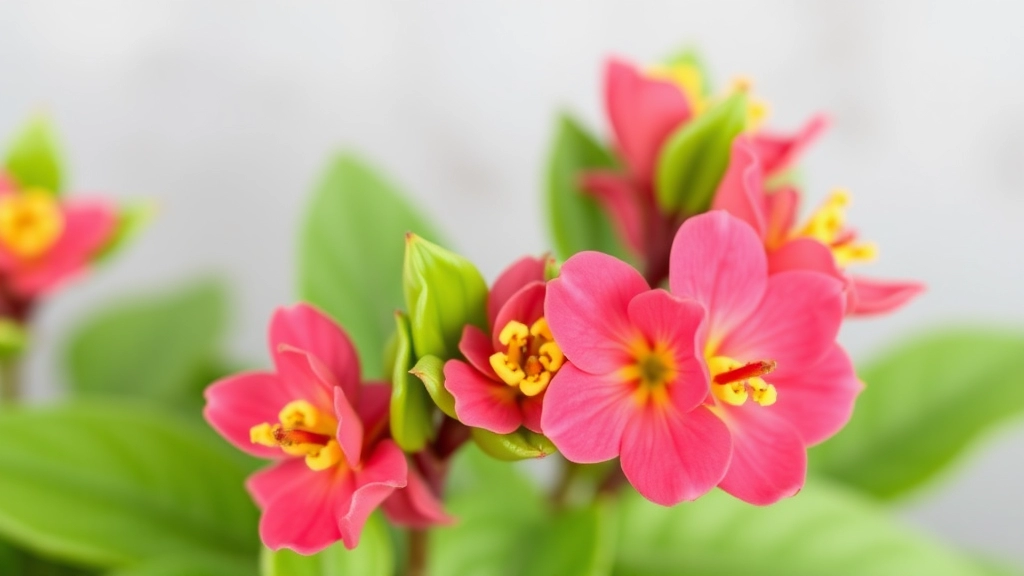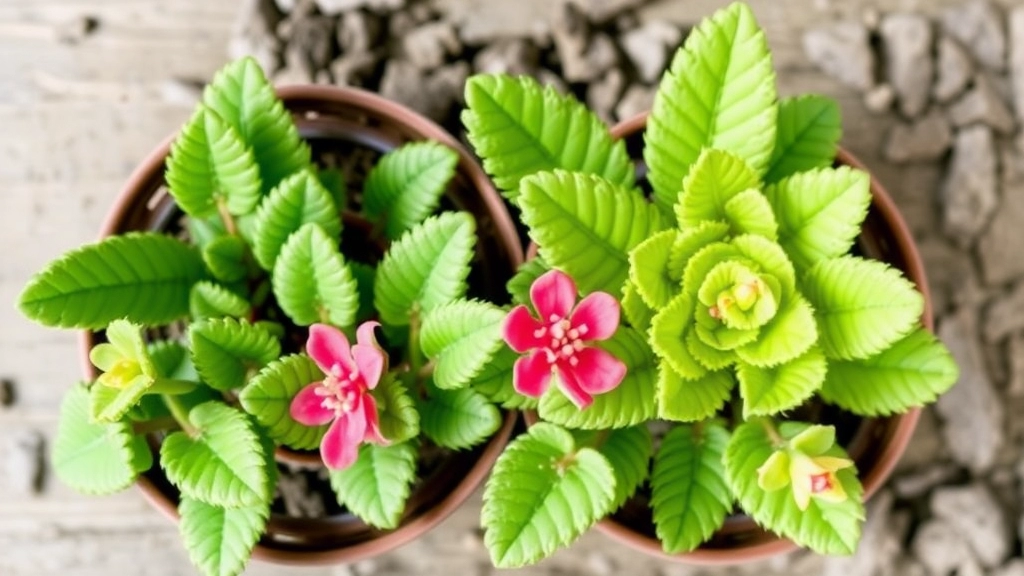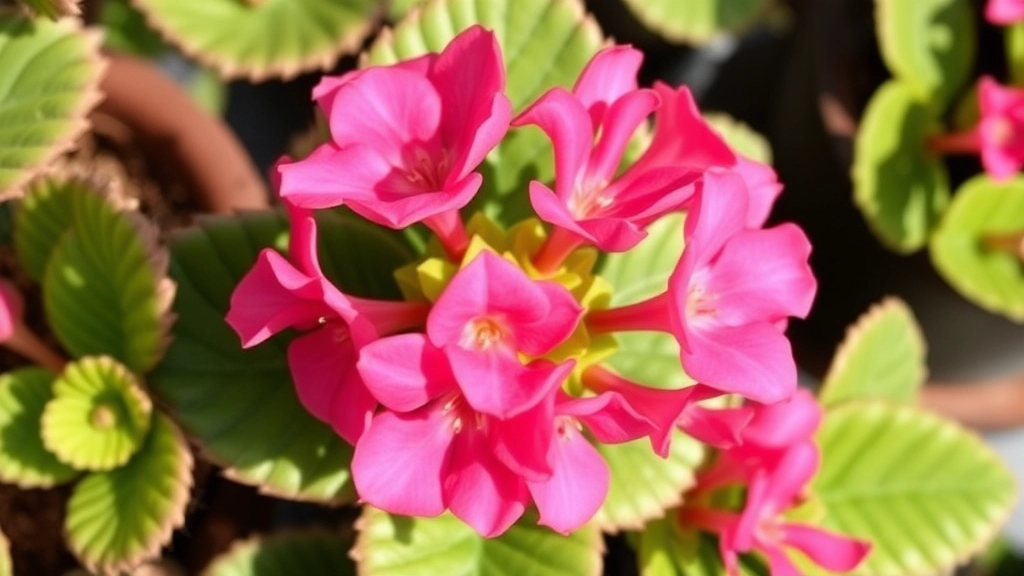Discovering the Potential of Kalanchoe Gastonis Bonnieri in Cancer Treatment
Discovering the potential of Kalanchoe Gastonis Bonnieri in cancer treatment is an exciting journey into the world of natural medicine. Commonly known as Donkey Ear, this plant is packed with bioactive compounds like flavonoids and ferulic acid, which are known for their anti-inflammatory and antioxidant properties. Recent studies suggest that these compounds might also inhibit cancer cell growth, making Kalanchoe a promising candidate for alternative cancer therapies.
Kalanchoe Gastonis Bonnieri: A Medicinal Plant Overview
Have you ever wondered about the potential of everyday plants in tackling serious health issues? One such plant that has garnered attention is Kalanchoe Gastonis Bonnieri, a remarkable member of the succulent family.
This medicinal plant is not just a pretty face; it boasts a rich history of traditional uses and a growing body of scientific research highlighting its potential benefits.
What is Kalanchoe Gastonis Bonnieri?
Kalanchoe Gastonis Bonnieri, often referred to simply as Kalanchoe, is a succulent native to Madagascar.
- Appearance: Its thick, fleshy leaves and vibrant flowers make it visually appealing.
- Habitat: Thrives in warm, arid climates, making it a popular choice for gardeners and herbalists alike.
Why is Kalanchoe Important?
The significance of Kalanchoe extends beyond its aesthetic value.
- Medicinal Properties: Known for its anti-inflammatory and antimicrobial properties.
- Cultural Relevance: Used in various traditional medicine practices around the world.
If you’re interested in exploring more about the various species of this plant, check out our Kalanchoe Species Identification Guide. Additionally, for those keen on understanding the medicinal uses of Kalanchoe in different cultures, our article on the Medicinal Benefits of Kalanchoe in Chile provides valuable insights.
Bioactive Compounds in Kalanchoe Gastonis Bonnieri

When diving into the world of Kalanchoe Gastonis Bonnieri, one of the first things that comes to mind is its impressive array of bioactive compounds.
These compounds are like little warriors, each playing a role in the plant’s medicinal properties.
Key Bioactive Compounds
- Flavonoids: These are powerful antioxidants that help combat oxidative stress in our bodies. They’re known for their anti-inflammatory properties too.
- Saponins: Found in many plants, saponins have been linked to immune system support and may even help in reducing cholesterol levels.
- Triterpenes: These compounds are celebrated for their potential anticancer properties. They can interfere with cancer cell growth and promote apoptosis (cell death) in harmful cells.
- Alkaloids: These are nitrogen-containing compounds that often have significant pharmacological effects. They can serve as pain relievers and have been studied for their potential in cancer therapy.
Why They Matter
Understanding these bioactive compounds is crucial because they form the backbone of Kalanchoe’s medicinal claims.
Each compound contributes to the plant’s overall effect, making it a fascinating subject for both traditional and modern medicine.
A Closer Look
When we think about how Kalanchoe Gastonis Bonnieri might help in fighting diseases, it’s these compounds we should thank.
They’re not just fancy names; they represent a treasure trove of health benefits waiting to be explored.
As we delve deeper into the fascinating world of Kalanchoe Gastonis Bonnieri, it’s essential to explore its traditional medicinal applications.
### Historical Context
Kalanchoe Gastonis Bonnieri has been revered in various cultures for centuries.
– **Cultural Significance**: In many African and Asian communities, this plant is not just a remedy but a symbol of healing and resilience.
– **Traditional Practices**: Local healers often incorporate Kalanchoe into their treatments, highlighting its importance in folk medicine.
### Common Applications
The traditional uses of Kalanchoe Gastonis Bonnieri in medicine are diverse and impactful:
– **Wound Healing**: The leaves are often used topically to promote healing of cuts and abrasions.
– **Anti-inflammatory Properties**: It has been used to alleviate symptoms of inflammation, making it a go-to for conditions like arthritis.
– **Respiratory Issues**: Infusions of the plant have been employed to treat coughs and other respiratory ailments.
### Anecdotal Evidence
While scientific studies are still emerging, anecdotal evidence from users speaks volumes:
– **Personal Stories**: Many individuals share their positive experiences using Kalanchoe for various ailments, reinforcing its place in traditional medicine.
– **Community Knowledge**: Passed down through generations, the knowledge of Kalanchoe’s benefits is deeply embedded in local customs. For those interested in exploring the broader health benefits of related species, check out the [how to use Kalanchoe Pinnata for health benefits](https://planthq.org/how-to-use-kalanchoe-pinnata-for-health-benefits/).
If you’re curious about the optimal conditions for growing Kalanchoe, you might find the [Kalanchoe temperature tolerance guide](https://planthq.org/kalanchoe-temperature-tolerance-guide-optimal-conditions/) particularly useful.
Scientific Studies on Kalanchoe’s Potential in Cancer Therapy

As we delve deeper into the medicinal properties of Kalanchoe Gastonis Bonnieri, it’s essential to explore the scientific studies that highlight its potential role in cancer therapy.
Research has increasingly focused on Kalanchoe’s bioactive compounds, particularly their anti-cancer properties. Various studies have demonstrated that extracts from this plant exhibit cytotoxic effects against different cancer cell lines.
- Key Findings:
- Apoptosis Induction: Some studies suggest that Kalanchoe can trigger programmed cell death in cancer cells, a critical mechanism in cancer treatment.
- Inhibition of Tumour Growth: Research indicates that Kalanchoe extracts can slow down or even halt the growth of tumours in laboratory settings.
- Synergistic Effects: Preliminary findings suggest that Kalanchoe may enhance the efficacy of conventional chemotherapy drugs, potentially allowing for lower dosages and reduced side effects.
For instance, a study published in a reputable journal showcased how Kalanchoe extracts led to significant reductions in the viability of breast cancer cells. Another investigation revealed its potential in combating leukemia, further solidifying its status as a candidate for cancer therapy.
Despite these promising results, it’s crucial to note that most studies have been conducted in vitro or on animal models. Thus, while the findings are encouraging, more extensive clinical trials are necessary to fully understand Kalanchoe’s effectiveness and safety in human subjects.
Mechanisms of Action: How Kalanchoe Gastonis Bonnieri Fights Cancer
As we delve deeper into the potential of Kalanchoe Gastonis Bonnieri, it becomes essential to understand how this remarkable plant operates at a molecular level to combat cancer.
Key Mechanisms of Action:
- Induction of Apoptosis:
- Kalanchoe Gastonis Bonnieri has been observed to promote programmed cell death, or apoptosis, in cancer cells.
- This process is crucial as it helps eliminate damaged or malignant cells, preventing their proliferation.
- Inhibition of Tumour Growth:
- Compounds found in Kalanchoe can hinder the growth of tumours by interfering with the cancer cell cycle.
- By disrupting vital processes, these compounds can slow down or even halt the progression of cancer.
- Anti-inflammatory Properties:
- Chronic inflammation is a known contributor to cancer development.
- The anti-inflammatory effects of Kalanchoe help reduce inflammation, potentially lowering the risk of cancer progression.
- Antioxidant Activity:
- The presence of antioxidants in Kalanchoe Gastonis Bonnieri neutralises free radicals, which can cause cellular damage and lead to cancer.
- By protecting cells from oxidative stress, Kalanchoe supports overall cellular health.
- Immune System Modulation:
- Kalanchoe may enhance the immune response, making the body more adept at identifying and destroying cancer cells.
- A robust immune system is vital for combating cancer effectively.
These mechanisms highlight the multifaceted approach of Kalanchoe Gastonis Bonnieri in cancer therapy. For more insights on the care and benefits of this plant, check out our essential care tips and guide. Additionally, learn about the health benefits of Kalanchoe Pinnata to further understand the medicinal potential of this plant family.
Comparing Kalanchoe Gastonis Bonnieri with Other Medicinal Plants

Now that we’ve explored the potential of Kalanchoe Gastonis Bonnieri in cancer therapy, it’s time to see how it stacks up against other medicinal plants.
Have you ever wondered why some plants get all the hype while others fly under the radar?
Kalanchoe Gastonis Bonnieri is often overshadowed by more popular herbs like turmeric and ginger. But it has its own unique benefits that are worth considering.
Unique Qualities of Kalanchoe Gastonis Bonnieri
- Bioactive Compounds: Unlike turmeric, which is rich in curcumin, Kalanchoe boasts compounds like flavonoids and saponins. These have been shown to have anti-inflammatory and anti-cancer properties.
- Traditional Use: While ginger is famous for its digestive benefits, Kalanchoe has a rich history in folk medicine, particularly for wound healing and respiratory issues.
- Cancer Focus: Many medicinal plants have anti-cancer properties, but Kalanchoe’s specific action mechanisms are still being researched, making it a fascinating contender in the field.
What Sets It Apart?
- Versatility: Kalanchoe can be used in various forms—juices, extracts, and teas. This flexibility makes it easier to incorporate into daily routines compared to some more niche plants.
- Cultural Significance: In some cultures, Kalanchoe is more than just a medicinal plant; it’s part of traditional rituals and practices, which adds another layer of value.
Similarities with Other Plants
- Anti-Inflammatory: Like ginger and turmeric, Kalanchoe has shown promise in reducing inflammation. This makes it a good option for those looking for natural remedies.
- Adaptogenic Qualities: Kalanchoe shares this characteristic with plants like ashwagandha, helping the body cope with stress, though the mechanisms may differ.
Why Choose Kalanchoe?
If you’re looking for a plant that combines traditional wisdom with emerging scientific research, Kalanchoe Gastonis Bonnieri might just be the one.
Ethnopharmacological Insights: Cancer Treatment in Folk Medicine
As we delve deeper into the traditional uses of Kalanchoe Gastonis Bonnieri, it’s essential to explore how folk medicine has long embraced this plant in cancer treatment.
Traditional Wisdom Meets Modern Science
Many cultures have relied on the healing properties of plants for centuries, often passing down knowledge through generations. Kalanchoe Gastonis Bonnieri is no exception.
- Cultural Significance: In various regions, this plant is revered not just for its beauty but also for its medicinal prowess, particularly in treating ailments like cancer.
- Folk Remedies: Traditional healers often prepare Kalanchoe in various forms, such as:
- Infusions: Steeping leaves in hot water to create a potent tea.
- Poultices: Crushing leaves and applying them directly to affected areas.
- Tinctures: Extracting bioactive compounds using alcohol for concentrated effects.
Healing Practices Across Cultures
Different cultures have unique approaches to using Kalanchoe in cancer therapies:
- African Traditions: In some African communities, Kalanchoe is used alongside other herbs to enhance its therapeutic effects.
- Asian Practices: In traditional Chinese medicine, Kalanchoe is often combined with other medicinal plants to create holistic treatment plans.
Anecdotal Evidence and Community Trust
While scientific studies are still emerging, anecdotal evidence from individuals who have used Kalanchoe for cancer treatment highlights its potential benefits. Many report:
- Improved Well-being: Users often feel better overall, attributing their health improvements to the plant.
- Complementary Use: Kalanchoe is frequently employed alongside conventional treatments, providing a sense of agency and hope for patients.
Bridging Tradition and Research
The growing interest in Kalanchoe Gastonis Bonnieri has sparked a wave of scientific investigation, aiming to validate these traditional uses. For those interested in the broader applications of this plant, the benefits and uses of Kalanchoe Pinnata in Tamil Nadu offer additional insights. Moreover, understanding different varieties and traits of Kalanchoe succulents can further enhance our appreciation of this remarkable plant.
VIII. Safety, Side Effects, and Usage Guidelines of Kalanchoe Gastonis Bonnieri

So, you’re curious about Kalanchoe Gastonis Bonnieri and how safe it is, right?
Let’s dive into that!
Safety First: What You Need to Know
When considering any medicinal plant, safety is always a top concern. Kalanchoe Gastonis Bonnieri is no different.
While many folks have used it traditionally, it’s crucial to approach it with caution. Here are some key points to keep in mind:
- Consult a Professional: Always chat with a healthcare provider before starting any new herbal remedy, especially if you’re on medication or have existing health issues.
- Dosage Matters: There isn’t a one-size-fits-all dosage for Kalanchoe. Start small and see how your body reacts.
- Pregnancy and Nursing: If you’re pregnant or breastfeeding, it’s best to steer clear of Kalanchoe until you get the green light from your doctor.
Potential Side Effects
Now, let’s talk about side effects. While Kalanchoe is generally considered safe, some people might experience:
- Digestive Upset: Nausea or stomach discomfort can occur, especially with higher doses.
- Allergic Reactions: Skin rashes or itching can happen if you’re sensitive to the plant.
- Interactions with Medications: Kalanchoe might interfere with certain medications, so be vigilant.
Usage Guidelines: How to Incorporate Kalanchoe
Thinking of adding Kalanchoe to your wellness routine? Here’s how to do it wisely:
- Forms Available: Kalanchoe can come in teas, tinctures, or capsules. Choose what suits you best.
- Preparation Tips: If you’re making tea, steep the leaves in hot water for about 10-15 minutes.
- Monitor Your Body: Keep an eye on how you feel. If anything seems off, don’t hesitate to stop use and consult a professional.
As we delve deeper into the potential of Kalanchoe Gastonis Bonnieri in cancer therapy, it’s crucial to explore the avenues for future research that can unlock its full medicinal capabilities.
### Key Areas for Exploration
– **Clinical Trials**
– Conducting well-designed clinical trials to assess the efficacy of Kalanchoe extracts in various cancer types.
– Evaluating dosage, administration methods, and long-term effects on patients.
– **Mechanistic Studies**
– Investigating the specific bioactive compounds responsible for anti-cancer effects.
– Understanding how these compounds interact at the cellular level.
– **Synergistic Effects**
– Exploring the potential of Kalanchoe Gastonis Bonnieri in combination with existing cancer therapies.
– Assessing whether it can enhance the effectiveness of chemotherapy or radiotherapy.
– **Formulation Development**
– Creating standardized extracts or formulations for consistent therapeutic use.
– Investigating delivery methods that improve bioavailability and stability.
– **Ethnopharmacological Validation**
– Collaborating with traditional healers to document and validate historical uses.
– Understanding the cultural context and practices surrounding Kalanchoe in folk medicine.
– **Safety Profile**
– Conducting comprehensive studies on the safety and potential side effects of long-term use.
– Identifying any contraindications or interactions with other medications.
– **Mechanisms of Resistance**
– Studying how cancer cells may develop resistance to Kalanchoe compounds.
– Identifying pathways that could be targeted to overcome resistance.
By addressing these areas, we can better understand how Kalanchoe Gastonis Bonnieri can contribute to cancer treatment. For more information on the **medicinal benefits of Kalanchoe Pinnata**, you can check out our detailed guide. Additionally, understanding whether **Kalanchoe is poisonous to humans** can provide valuable insights into its safe usage.
FAQs about Kalanchoe Gastonis Bonnieri and Its Potential in Cancer Therapy
What are the key bioactive compounds found in Kalanchoe Gastonis Bonnieri?
Kalanchoe Gastonis Bonnieri contains several important bioactive compounds, including flavonoids, saponins, triterpenes, and alkaloids. These compounds contribute to its medicinal properties, such as anti-inflammatory, immune-supporting, and potential anticancer effects.
How do these bioactive compounds contribute to cancer therapy?
The bioactive compounds in Kalanchoe Gastonis Bonnieri, particularly triterpenes and alkaloids, have shown potential in interfering with cancer cell growth and promoting apoptosis (cell death) in harmful cells. Research indicates that these compounds can induce programmed cell death and inhibit tumor growth.
Are there any scientific studies supporting Kalanchoe’s role in cancer therapy?
Yes, various scientific studies have demonstrated that Kalanchoe extracts exhibit cytotoxic effects against different cancer cell lines. Some studies suggest that Kalanchoe can trigger apoptosis in cancer cells and slow down or halt tumor growth. However, most studies have been conducted in vitro or on animal models, so more clinical trials are needed to confirm its effectiveness and safety in humans.
How does Kalanchoe Gastonis Bonnieri compare to other medicinal plants?
Kalanchoe Gastonis Bonnieri is often overshadowed by more popular herbs like turmeric and ginger. However, it has unique benefits, such as its specific bioactive compounds like flavonoids and saponins, which have anti-inflammatory and anti-cancer properties. It is also versatile and can be used in various forms, making it easier to incorporate into daily routines.
What are the safety considerations when using Kalanchoe Gastonis Bonnieri?
While Kalanchoe Gastonis Bonnieri is generally considered safe, it is important to consult a healthcare provider before starting any new herbal remedy, especially if you are on medication or have existing health issues. Be mindful of dosage, and avoid use during pregnancy or breastfeeding unless advised by a doctor.
What are the potential side effects of Kalanchoe Gastonis Bonnieri?
Some potential side effects include digestive upset (such as nausea or stomach discomfort), allergic reactions (like skin rashes or itching), and interactions with certain medications. It is important to monitor how your body reacts and consult a professional if you experience any adverse effects.
How can I incorporate Kalanchoe Gastonis Bonnieri into my wellness routine?
Kalanchoe can be used in various forms, such as teas, tinctures, or capsules. If making tea, steep the leaves in hot water for about 10-15 minutes. Start with a small dosage and monitor your body’s response. Always consult a healthcare provider for personalized advice.
References
-
Bioactive compounds and medicinal properties of Kalanchoe species
-
Phytochemical analysis and potential health benefits of Kalanchoe species
-
Anticancer properties of Kalanchoe extracts: A review
